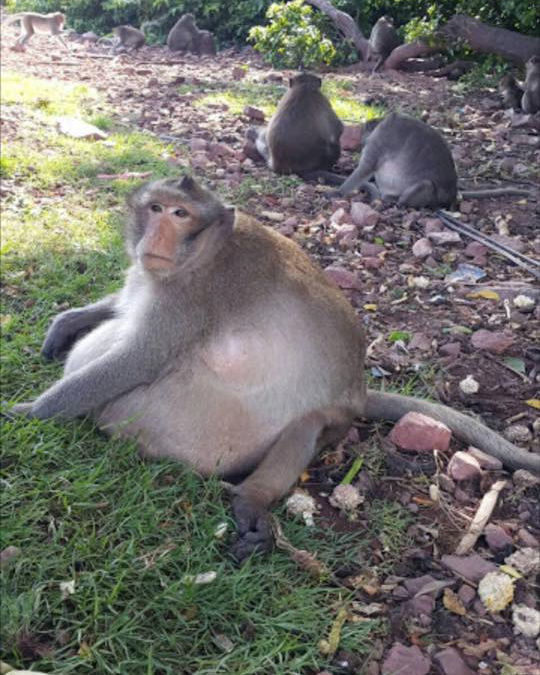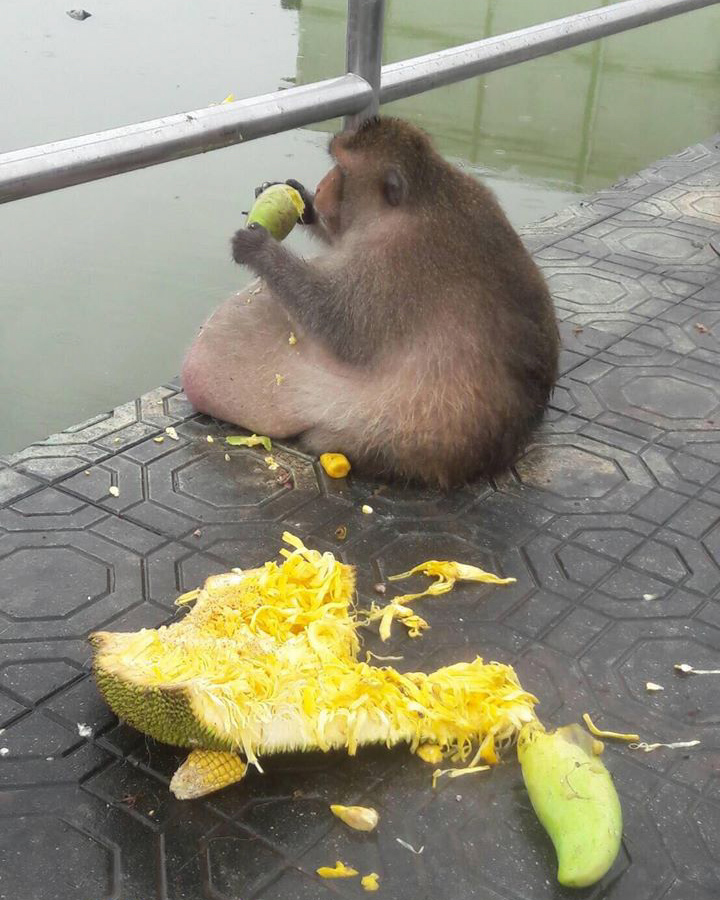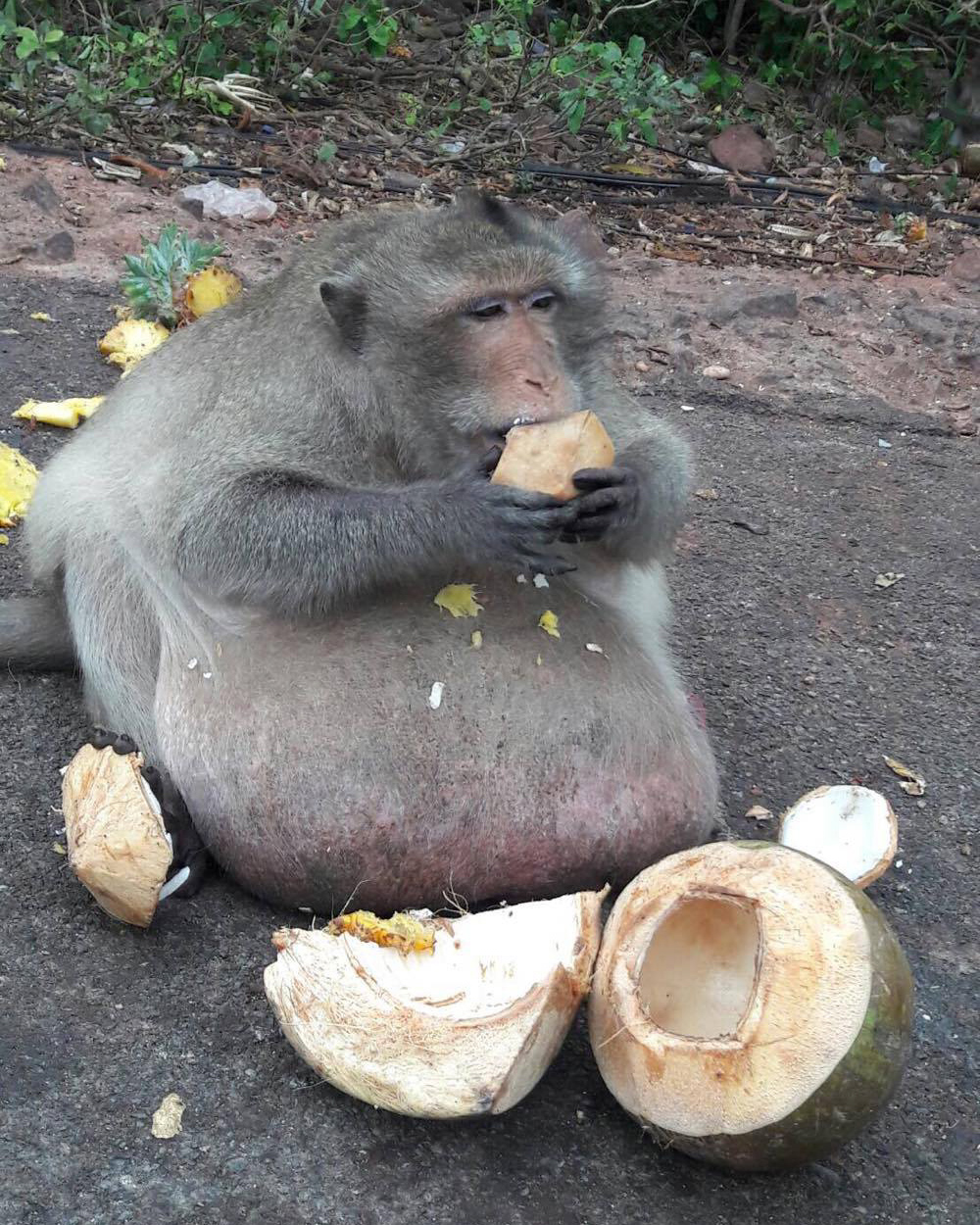In Photos: Obese Macaque Gorges on Human Junk Food
Who's grooming?

In this social animal, grooming can be a measure of status. For instance, lower-ranking individuals tend to groom, at length, the higher-ranking macaques, the primate center said.
Tool users

Scientists have found that about 80 percent of a population of Burmese long-tailed macaques on an island in southern Thailand actually use tools. The study, published May 13, 2015 in the open-access journal PLOS ONE, revealed the animals were using tools made of stones and shells to crack open seafood.
Lots of food

The long-tailed macaque in Bangkok can be seen eating leftovers and snacks from tourists in the area.
Lonely?

The long-tailed macaque from Bangkok is lounging around.
Eating like a tourist

The obese macaque chows down on human food.
Tourist attraction

Apparently, tourists at the Bangkok floating market love watching this monkey chow down.
Get the world’s most fascinating discoveries delivered straight to your inbox.
Jeanna Bryner is managing editor of Scientific American. Previously she was editor in chief of Live Science and, prior to that, an editor at Scholastic's Science World magazine. Bryner has an English degree from Salisbury University, a master's degree in biogeochemistry and environmental sciences from the University of Maryland and a graduate science journalism degree from New York University. She has worked as a biologist in Florida, where she monitored wetlands and did field surveys for endangered species, including the gorgeous Florida Scrub Jay. She also received an ocean sciences journalism fellowship from the Woods Hole Oceanographic Institution. She is a firm believer that science is for everyone and that just about everything can be viewed through the lens of science.
